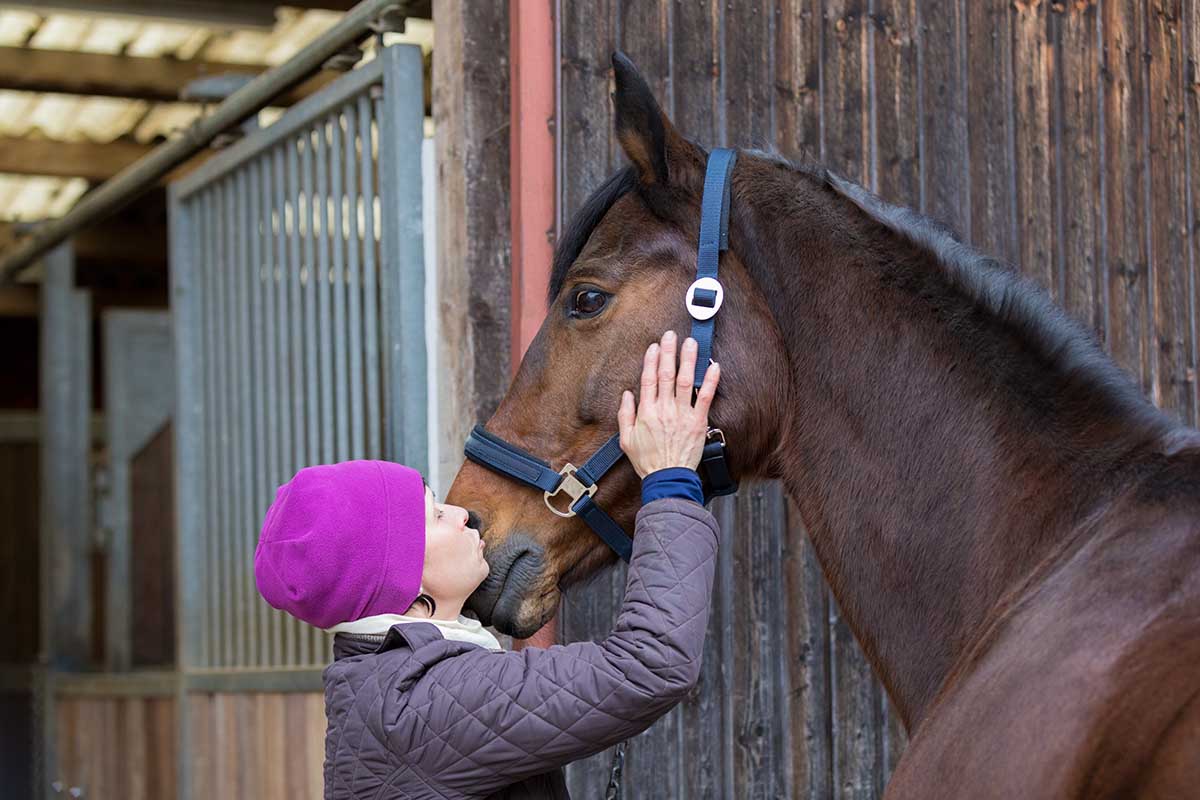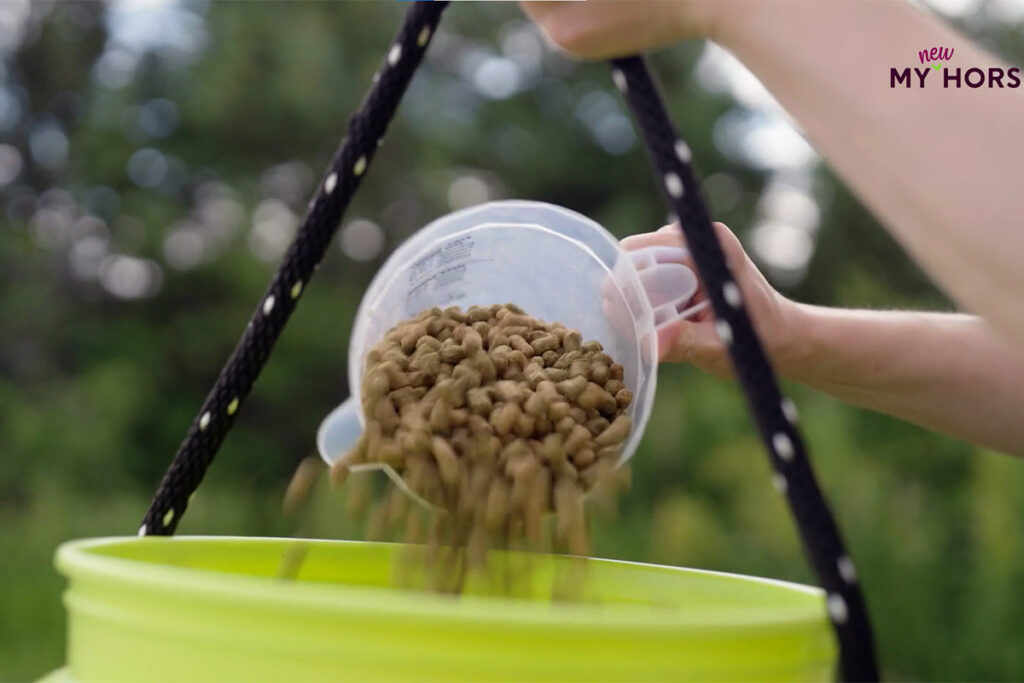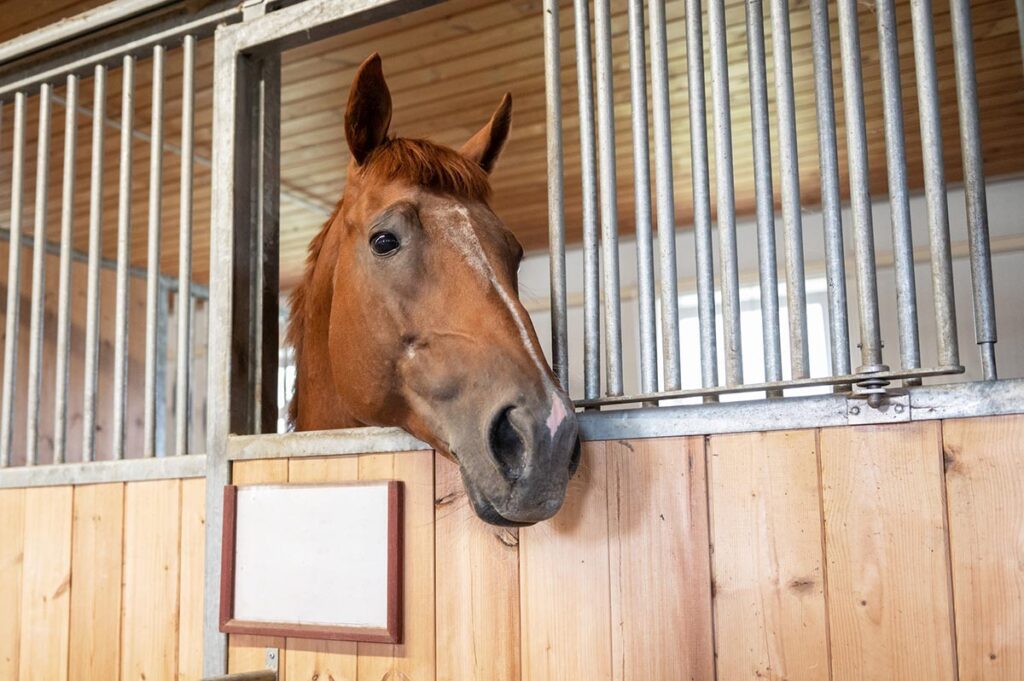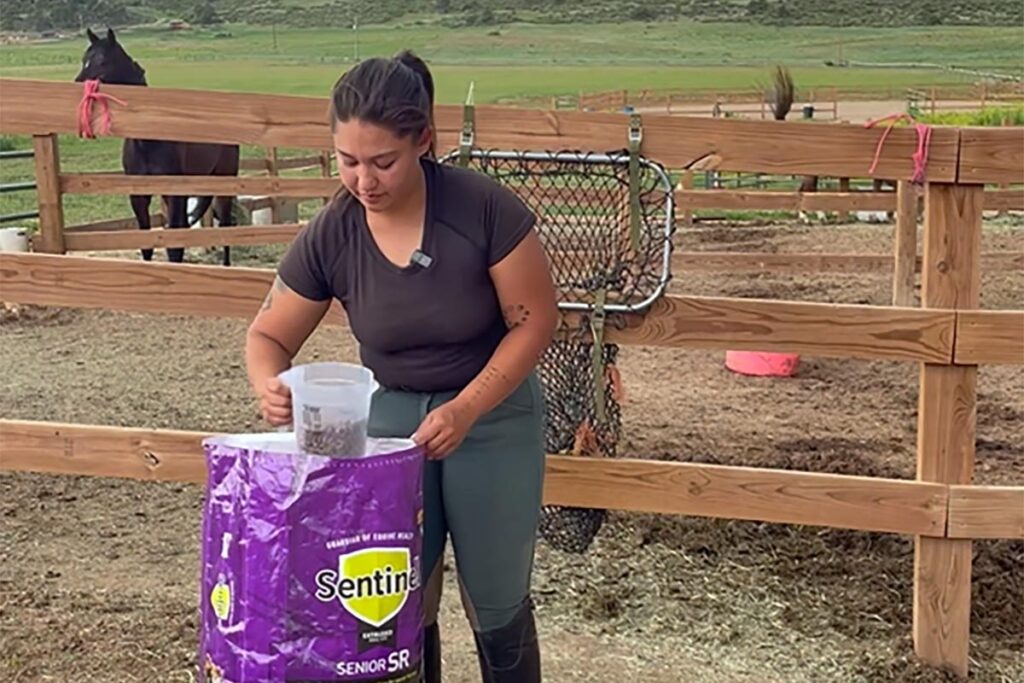There may come a time in many horse owners’ lives when circumstances change—whether due to health, financial strain, life transitions, or evolving riding goals—and they begin to consider new options for their horse’s future. These decisions are never easy, and the emotional weight that comes with them is significant. In many cases, the horse is deeply loved, and the desire to do what’s best for them remains front and center.
It’s important to understand that needing to rehome a horse does not mean the animal has been neglected or mistreated. In fact, most horses entering shelters come from responsible owners who are proactively seeking help.
According to the Equine Welfare Data Collective’s 2019 report, 52% of horses entering shelters did so through owner surrender—77% of those due to personal financial or health-related reasons.
Plan Ahead and Be Transparent
Reaching out for assistance should never be seen as a failure. Rather, it is a responsible and commendable step toward ensuring the long-term well-being of the horse. Many rescues and organizations actually prefer to work with owners before a situation becomes critical. The earlier the conversation begins, the more options are typically available.
Because it can sometimes take time to find an appropriate placement, especially for older horses, those with special needs, or those requiring specific types of homes, starting the process early is essential. Whether you’re exploring sale, retirement placement, or rehoming options through a rescue or sanctuary, allowing time for the right opportunity to arise can make all the difference.
If your goal is to keep your horse but you’re temporarily struggling, be sure to explore the safety net resources available in the United Horse Coalition’s Equine Resource Database, which are designed to help owners during times of hardship.
Regardless of the path you choose, the ultimate goal is to ensure your horse’s continued care, safety, and happiness. Being transparent about your horse’s needs, abilities, and health status is not only a legal responsibility in many cases but also the best way to help them transition into a successful next chapter.
In most cases, there are four options available to owners who need to rehome their horse:
- Sale
- Donation/gift
- Rehoming to a rescue/sanctuary
- Euthanasia
The options available to you may be based on the health, soundness, age, training level, and temperament of your horse. Some options have strict criteria for qualification; not every horse is suitable for every job. For more information, please read on.
Private Sale
Selling your horse to another person enables you to meet and perhaps develop a relationship with the buyer. There are many ways to advertise your horse for sale, including classified ads in your local paper, horse magazines, websites, feed and tack stores, shows or rides in your area, or by directly contacting other horse owners and trainers and letting them know you’re marketing your horse for sale.
Prices and conditions vary by sale and by region, so be aware of standards in your area. Also, in a private sale, you might have the option of putting a buy-back agreement into the sale. So if the new owner decides to sell the horse, you’ll have an opportunity to buy the horse back. Please remember to disclose any health problems, limitations, or vices your horse might have when selling him. This will help ensure your horse is well-matched in the new home and reduce the chance he could be put into a situation that becomes at risk. You might also want to consider microchipping your horse so you can be contacted and given the opportunity to purchase or receive him back should a situation arise that warrents it.
Auction
Although auction is another option for selling your horse, we strongly encourage owners to pursue other available options first. Local sale barns or fairgrounds can provide you with auction dates. Additionally, some auctions advertise in newspaper classifieds or at feed and tack stores and on various websites.
Be aware of the types of animals for sale at various auctions, and do your due diligence. Almost all “horse auctions” involve the sale of horses to individuals who want to buy a horse for various purposes, such as racing, showing, companionship, or recreational riding. Many of these horses have “reserves” or minimum bids that must be paid for the sale to be completed. Indeed, at many the seller can speak to the auction company and set a price below which the horse would not be sold. In that scenario, it would be returned to the seller. Other sales do not have such minimums, and the horse sells regardless of the bid price.
At livestock auctions, dealers might purchase horses to take to facilities that will process the horses for meat shipped overseas for human consumption. It is important that all owners be aware of this possibility when they send their horses to auction. Please read the United Horse Coalition’s alert on kill pen/bail out operations for more information.
Leasing
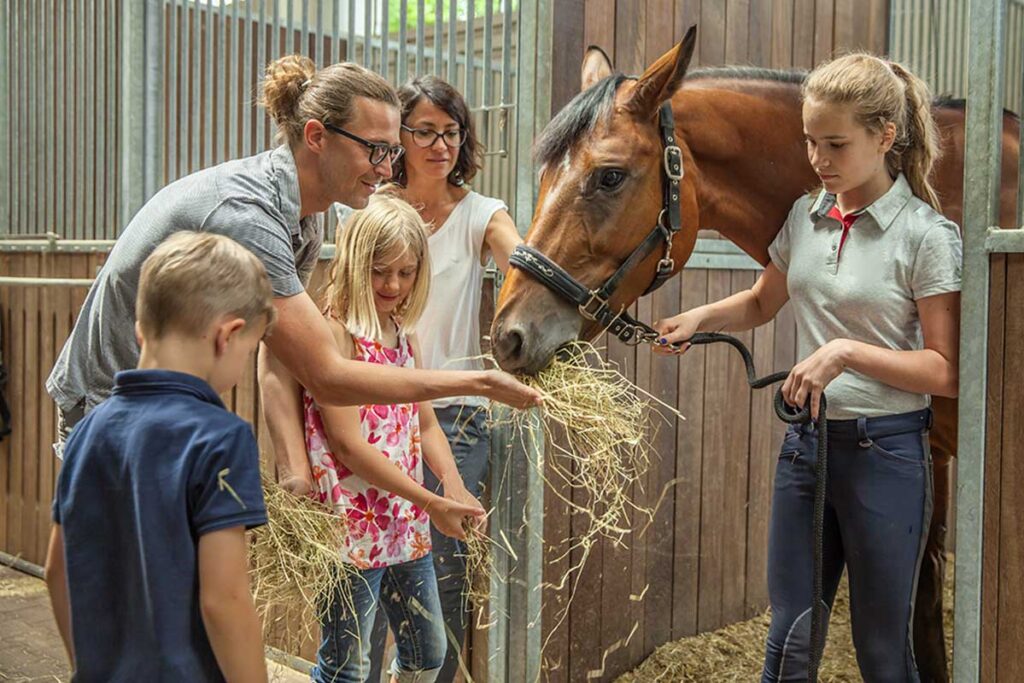
An increasingly popular form of horse “ownership” is leasing. Provided the horse is sound with a good disposition, many people interested in owning horses would prefer this try-before-you-buy option. It provides an opportunity for potential owners to see how a horse would fit into their lives. As leasing grows in popularity, so do the forms of lease payments. You can loan the horse in exchange for boarding and daily care, or you can create another lease deal with the lessee.
Related Reading: Everything You Need to Know About Leasing a Horse
Retirement
An equine retirement facility is like an assisted living facility for people. The staff is trained in caring for the health issues facing older horses and those with injuries. More often than not, retirement facilities house horses that are no longer used for riding and working. They take not only elderly horses but also those that have ailments but are still comfortable to walk and graze. Their daily routines should include lots of turnout with buddies and good, quality attention. Of importance, a good retirement facility should have plenty of pasture. A key issue with elderly horses is that they need room to move around to combat arthritis—horses standing in box stalls will stiffen up quickly.
Another thing to note is whether the facility offers specialized care, such as custom feed, special medical attention, and an educated staff that understands your horse’s needs. Retirement facilities are typically not free. The horse owner pays a monthly board bill just as you would at any boarding facility. Some retirement facilities allow you to donate your horse, but you would no longer own him or control what happens to him. Most of these are for specific breeds.
In certain cases, horses must be at least pasture sound. Some might go on to second careers, while most spend the rest of their days eating grass. Some facilities only accept unsound or “pasture pet” horses for retirement with a yearly tax-deductible donation for the ongoing care of the horse.
Rehoming Your Horse Through a Rescue or Sanctuary
If you are in a position in which safety net programs are not an option, and you are unable to pursue other placement options due to limited resources or the horse’s suitability for a particular program, the next best course of action would be to pursue placing your horse in transition through reputable equine rescues and sanctuaries. Even if a rescue does not have physical space to accept the horse, they might offer direct placement services or other options to find a suitable home without entering the rescue directly. Rescues and sanctuaries can often network to keep a horse that’s in a transitional phase from reaching an at-risk state.
You can choose from many rescues and sanctuaries nationwide, with as various missions and policies regarding the horses they take in. If you’ve decided to find a rescue or sanctuary for your horse, review the Care Guidelines for Equine Rescue and Retirement Facilities, developed by the American Association of Equine Practitioners (AAEP) to ensure the facility you’re considering operates by them. The AAEP guidelines are intended for rescue and retirement facilities, but any facility that accepts horses should adhere to its basic principles.
Related Reading: 24 Questions to Ask Before Rehoming Your Horse
Therapeutic Riding Centers
You can also find therapeutic riding centers cities and towns across the nation. These centers provide a variety of equine activities to people with physical, emotional, and learning disabilities. For individuals with special needs, equine-assisted activities can help improve muscle tone, balance, posture, coordination, motor development, as well as emotional well-being. The North American Riding for the Handicapped Association (NARHA), a national nonprofit, accredits many of these riding centers and certifies their instructors. Horses are valued partners in the human-equine relationship that is therapeutic riding. Because the horses must interact with individuals who often have profound disabilities, these riding centers are highly selective when accepting horses into a program. Many of these horses are donated, volunteered, or leased by horse owners in the community.
The horse’s breed is not a critical consideration—different breeds offer different builds needed for a wide range of activities, including riding, driving, vaulting, and interaction on the ground. The most important aspect is the individual horse’s suitability for equine-assisted activities and therapy.
While minor health issues might be acceptable, horses used for therapeutic riding programs must be sound enough to work regularly. To the casual observer, walking in an arena with a disabled person looks like an easy task for a horse, but it is not. The horse must be physically able to carry a person whose weight might be distributed unevenly. In addition, the horse must be able to deal with situations such as quietly walking up to a ramp with a person in a wheelchair and standing perfectly still while the person is mounting the horse.
Prior to accepting the donation of a horse, most therapeutic riding centers will:
- Evaluate the horse’s conformation.
- Evaluate the horse’s health using a thorough veterinary check.
- Examine the horse’s gaits and way of going.
- Assess the horse’s attitude, reliability, and adaptability to new situations.
Many programs require horses to go through a trial period at the center before accepting them. Only a select number of horses meet the strict qualifications set forth by these riding centers. You can find a NARHA-affiliated therapeutic riding center near you on their website.
Colleges and Universities

Many colleges, universities, and private schools across the country have equine programs and accept donations of horses. These horses might be used for a riding program, breeding program, or needs associated with the curriculum of a pre-vet or veterinary degree.
Schools with an animal science department that includes an equine research component or a veterinary school might accept your horse for teaching/research to benefit medical advancements in the equine field. Once the property of a university, you will (generally) not be able to place restrictions on the use of that horse. It is certainly acceptable to inquire about the type of research undertaken by that particular school.
Academic programs have varying requirements for the horses they accept as donations. In some cases the school might lease the horse for a certain period. As in any other legal agreement, be aware of all the legal details and possible liabilities associated with a lease.
Potential donations to be used in the riding programs are often evaluated using stringent criteria as far as soundness, disposition, amount of training, and age. Institutions that have very strict donation requirements generally want the horse for the long-term. Schools that accept any and all donations tend to have a high turnover rate of horses within their program.
Horses accepted as a part of a university breeding program must meet breed and quality standards. Just because the horse is a mare doesn’t mean she is destined to be a breeding animal. Some schools specialize in a specific breed, such as Arabians, Thoroughbreds, American Quarter Horses, and Morgans. Other school programs might be known for specific equestrian disciplines, such as hunters or reining horses. A horse that doesn’t fit in one school’s program might be an ideal candidate for another.
Many people assume when they donate a horse to an educational institution, it will spend the rest of its life there. Once you donate a horse, it becomes the institution’s property. They can even sell it immediately or at a later date to raise additional funds for the program.
Do your homework! Before donating your horse to any organization, make sure you understand and are comfortable with their policies. The most important thing you can do is research the organization and make an informed decision about your horse’s future.
Mounted Police Units
The mounted unit pursues a fourfold mission that consists of traffic control, crowd control, community relations, and prevention of street crime. Public relations is a mounted unit forte. Seldom is public attention so magnetically drawn to police as it is to an officer on horseback. Mounted unit officers are also renowned for their expertise in crowd control. Officers work at concerts, demonstrations, strikes, entertainment events, public celebrations, and other assemblages that take place throughout the year. It has been estimated that one mounted officer on horseback has the effect of 10 officers on foot, depending on the crowd’s demeanor. The mounted unit has therefore earned the reputation for being in the vanguard whenever the police department is called upon to ensure the order and safety of large throngs of people.
What types of horses does the police unit accept? Every mounted police unit has specific requirements but generally these apply:
- Sex: Geldings only.
- Age: 3-9 years.
- Height: Minimum of 15.2 hands, preferably taller.
- Color: Solid darker colors with minimal white markings.
- Conformation: Good withers; sturdy legs and feet; strong bone and muscle.
- Health: Must be sound and in prime working condition with a negative Coggins test.
- Horses with vices such as kicking, biting, and cribbing would be disqualified.
Prison System
Some retired horses spend their days in the prison system. These programs can benefit both the horse and the inmates. Many inmates have never been around large animals. Building a bond with an animal helps teach them empathy and compassion. It’s a great learning experience for the inmates to see and manage the ailments that come with horses that have been around the block. Plus, each horse gets the special attention it might need. For many horses it’s their last option, as many nonprofit retirement facilities don’t have the staff to treat lots of special needs cases.
This article was produced by and originally ran on UnitedHorseCoalition.org.

